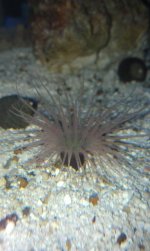- Location
- Sound Beach,LI
I picked one up the other day for my 20 gal. I dont have a light good enough for light demanding corals yet so i figured i go with a non-photo.
My question is,How often should i feed and what should i feed? I only have 3 damsels and 5 ghost shrimp in there,so ive only been feeding a pinch of flake per day. Any advice is appreciated. Tia
My question is,How often should i feed and what should i feed? I only have 3 damsels and 5 ghost shrimp in there,so ive only been feeding a pinch of flake per day. Any advice is appreciated. Tia






